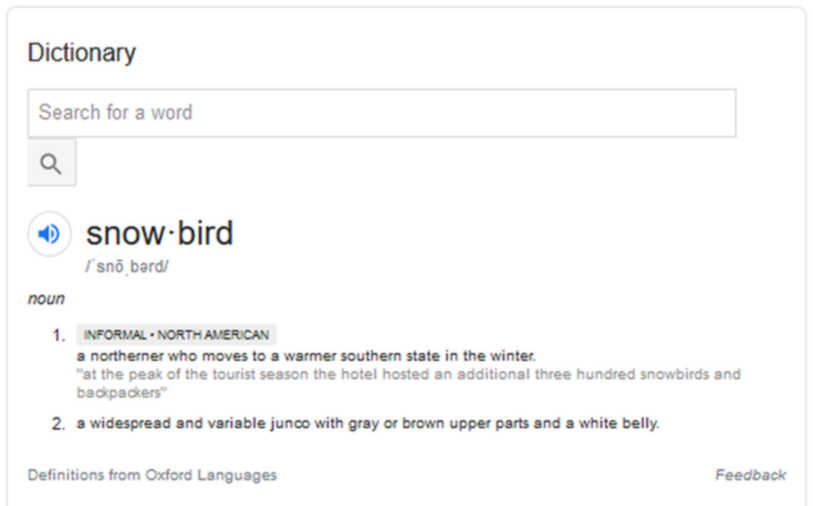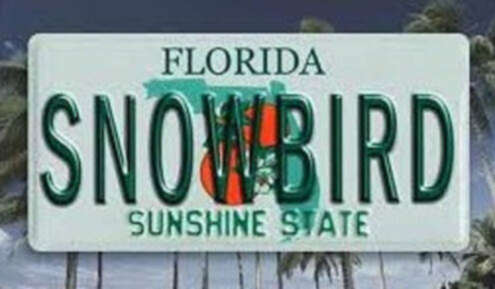- 💡How it Works
- ✅Get Quote
- 📌Order Tracker
- About Us
- Services
-
Help Desk
- How to
- 😕FAQ's
-
Topics
- Auction Transport
- Bill of Lading
- Cheapest Options
- Dealership Transport
- Diesel Fuel Rates
- Door to Door
- Driver Communication
- Expedited Service
- First-Time Customers
- Insurance Coverage
- Personal Items
- Preparation Steps
- Price Charts
- Price Factors
- Safest Ways
- Top-Load Placement
- Transport Industry
- Transport Process
- Transport Routes
- 📖Glossary
- 💡How it Works
- ✅Get Quote
- 📌Order Tracker
- About Us
- Services
-
Help Desk
- How to
- 😕FAQ's
-
Topics
- Auction Transport
- Bill of Lading
- Cheapest Options
- Dealership Transport
- Diesel Fuel Rates
- Door to Door
- Driver Communication
- Expedited Service
- First-Time Customers
- Insurance Coverage
- Personal Items
- Preparation Steps
- Price Charts
- Price Factors
- Safest Ways
- Top-Load Placement
- Transport Industry
- Transport Process
- Transport Routes
- 📖Glossary
Snow-Bird Season: What it Means When Transporting a Car
Learn all about what a snowbird is and why auto transport winter season is so important when the northern states begin to get cold.
Page Index:
Page Index:
Are You a Snow Bird: Things to Look For
|
The term "snowbird" typically refers to individuals, usually retirees or semi-retirees, who temporarily migrate from colder regions to warmer climates during the winter months. They often seek relief from the cold weather by spending extended periods in regions with milder climates, such as Southern states in the United States or other warm destinations.
|
Here are some indicators that you might be a snowbird:
If you find that many of these characteristics apply to your lifestyle, you may consider yourself a snowbird. It's a lifestyle choice that allows individuals to enjoy the best of both worlds by escaping harsh winters while maintaining connections with their primary residence during the rest of the year.
- Seasonal Migration:
If you regularly move or spend a significant portion of the winter months in a warmer location to escape the cold weather back home, you might be a snowbird. - Retiree or Semi-Retiree:
Snowbirds are often retirees or individuals with flexible work arrangements that allow them to travel and spend extended periods away from their primary residence. - Home-ownership in Multiple Locations:
Snowbirds may own or rent homes in both their primary residence (typically located in colder regions) and a secondary residence in a warmer destination. - Consistent Pattern:
Snowbirds typically follow a consistent pattern of migration, returning to the same warm location each year or rotating between a few favorite destinations. - Residency Duration:
Snowbirds usually spend a significant amount of time at their winter destination, often ranging from a few weeks to several months. - Weather-Dependent Travel:
Your travel plans are often influenced by the changing seasons, with the primary goal being to avoid the cold and inclement weather. - Engagement in Winter Community Activities:
Snowbirds often participate in social activities and communities specifically designed for winter residents, such as clubs, events, and gatherings.
If you find that many of these characteristics apply to your lifestyle, you may consider yourself a snowbird. It's a lifestyle choice that allows individuals to enjoy the best of both worlds by escaping harsh winters while maintaining connections with their primary residence during the rest of the year.
When the Cold Arrives, Snowbirds Take Flight
|
The snowbird season typically begins in the fall or early winter, around the time when colder weather starts to set in the northern regions. Snowbirds, who are usually retirees or individuals seeking warmer climates, begin their migration to escape the cold and harsh winter conditions.
In the United States, for example, snowbird season often starts around October or November. Many snowbirds from northern states, such as New York, Michigan, or Massachusetts, head south to states like Florida, Arizona, or Texas, where the weather is more temperate during the winter months. |
The exact start date of the snowbird season may vary depending on individual preferences, the location of the winter destination, and other factors. Some snowbirds might leave earlier in the fall, while others may wait until closer to winter to begin their migration.
The end of the snowbird season typically occurs in the spring, around March or April. As the weather starts to warm up in the northern regions, many snowbirds return to their primary residences, marking the conclusion of the snowbird season for that year.
Keep in mind that these time-frames are general guidelines, and some snowbirds might adjust their migration schedule based on personal preferences, travel arrangements, or other considerations.
Learn More: Winter Season Auto Transport
The end of the snowbird season typically occurs in the spring, around March or April. As the weather starts to warm up in the northern regions, many snowbirds return to their primary residences, marking the conclusion of the snowbird season for that year.
Keep in mind that these time-frames are general guidelines, and some snowbirds might adjust their migration schedule based on personal preferences, travel arrangements, or other considerations.
Learn More: Winter Season Auto Transport
Definition of Snowbird
1 : any of several birds (such as a junco or fieldfare) seen chiefly in winter
2 : one who travels to warm climes for the winter.
2 : one who travels to warm climes for the winter.
Tips for Snow Birds Car Shipping During The Winter Season
If you're a snowbird planning to use car shipping services to transport your vehicle between your summer and winter residences, here are some tips to ensure a smooth and hassle-free experience:
By following these tips, you can have a successful and worry-free car shipping experience as a snowbird, allowing you to enjoy your time in both your summer and winter residences without the stress of driving your vehicle long distances.
- Book in Advance:
Snowbird season can be busy for car shipping companies, so it's best to book your car transport well in advance. This allows you to secure a spot with your preferred carrier and potentially get better rates. - Research Reputable Companies:
Take the time to research and choose a reliable and experienced auto transport company. Read reviews, check their track record, and verify their licenses and insurance to ensure your vehicle is in safe hands. - Choose the Right Service Type:
Car shipping companies typically offer two main service types: open transport and enclosed transport. Open transport is more common and cost-effective, while enclosed transport provides extra protection for valuable or classic vehicles. - Check for Insurance Coverage:
Confirm the insurance coverage provided by the car shipping company. While they should have insurance to protect your vehicle during transit, it's essential to understand the extent of the coverage. - Prepare Your Vehicle:
Having car ready for loading is very important. Wash your car thoroughly before shipping to make it easier to inspect for any pre-existing damage. Also, remove any personal belongings from the vehicle to ensure compliance with regulations and to prevent loss or damage. - Document the Condition:
Take photos of your vehicle from various angles before handing it over to the shipping company. This documentation can serve as evidence in case any damage occurs during transit. - Communicate Pickup and Delivery Details:
Provide clear instructions for pickup and delivery locations, especially if your winter residence is in a gated community or has limited access for large transport trucks. - Be Flexible with Dates:
While booking in advance is essential, being flexible with pickup and delivery dates can increase the chances of finding a carrier that fits your schedule. - Prepare for Seasonal Weather:
If you're shipping your car during winter, make sure your vehicle is equipped to handle the weather conditions at both the pickup and delivery locations. - Stay Informed:
Keep in touch with the car shipping company and stay informed about your vehicle's progress during transit. Ensure they have your contact information and provide you with updates as needed.
By following these tips, you can have a successful and worry-free car shipping experience as a snowbird, allowing you to enjoy your time in both your summer and winter residences without the stress of driving your vehicle long distances.
|
Viceroy 👑
Auto Transport Services Viceroy promises to deliver the very best in customer service from the time your vehicle is picked up to the point of completion when your automobile is safe at its destination. State to state service with door to door delivery on most routes.
All our services are Fully Insured. |
|






